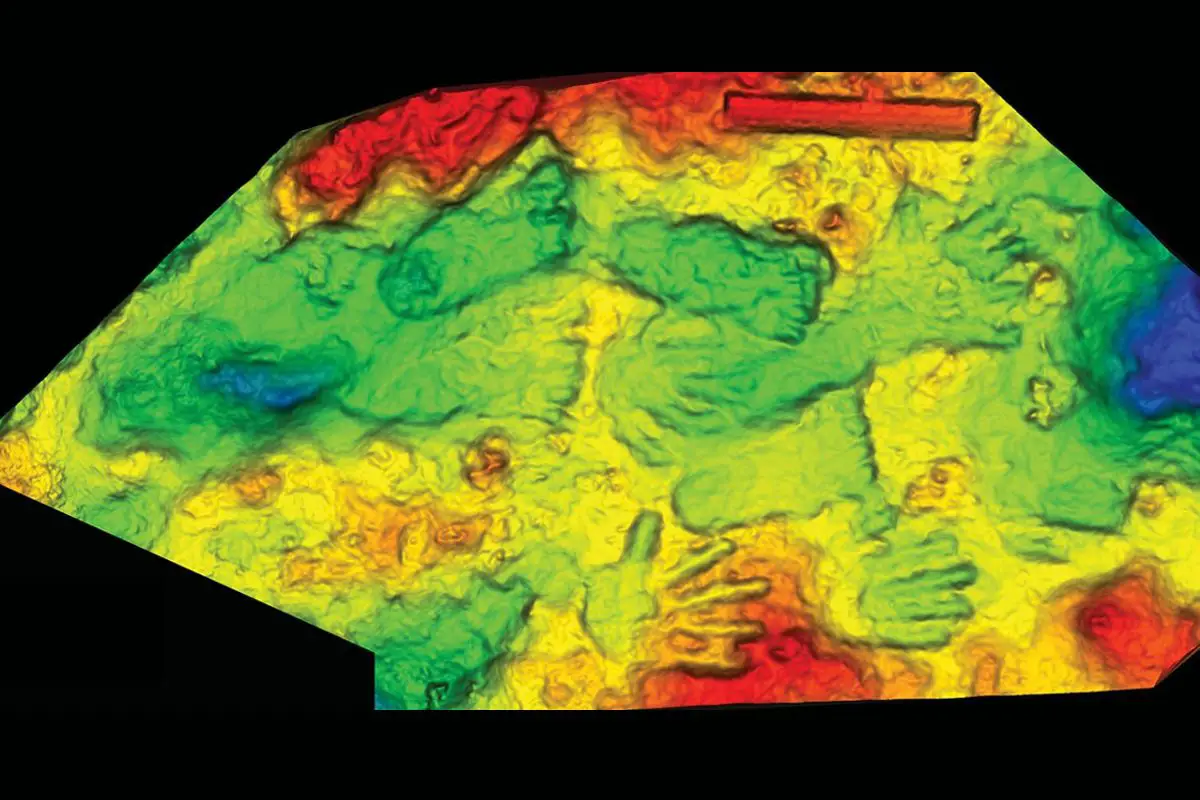The oldest example of immobile art consisting of carefully placed immortalised hand and footprints has been discovered in Tibet.
A multi-national team of researchers from Bournemouth University and Guangzhou University has found five handprints and five footprints in Quesang, on the Tibetan Plateau, dating from 169,000-226,000 years ago, in the middle of an Ice Age.
The prints were preserved in freshwater limestone deposited around a hot spring – known as travertine. Judging by the size and height of the prints, the analysis suggests that they were carefully placed by children around the age of seven to twelve years of age.
Dating of the prints was conducted using a radiometric method based on the decay of uranium found in the travertine, providing evidence for the earliest hominin occupation on the Tibetan Plateau.
Matthew Bennett, Professor of Environmental and Geographical Sciences at Bournemouth University said, “The prints were not left by normal walking and seem likely to have been deliberately left in what could be the earliest ever example of immobile, or parietal, art that we’ve found to date.”
Bennett added: “You could just imagine these children playing in the mud by a hot spring, placing their hands and feet carefully, where they have been preserved for thousands of years for us to find, like a child might do in cement today. This mud-like clay hardened and turned to travertine, which has kept these playful hand and footprints frozen in time.” Find out more
Header Image Credit : Bournemouth University





